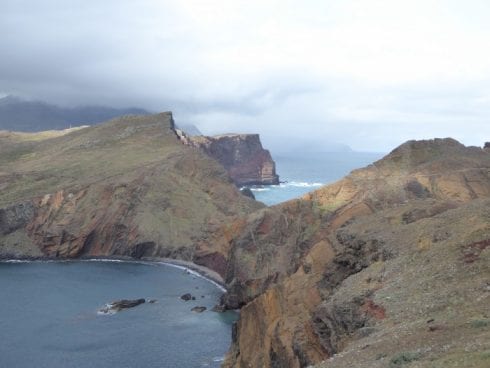SPAIN has been an extremely popular travel destination since the 60’s, particularly for other European nationals.
The tourism industry contributes a whopping 6.4% to the national Gross Domestic Product of the Mediterranean country and for anyone who has ever been there, this is hardly surprising. The country greeted a record 64.9 million visitors in 2014, and the most popular destinations include the capital Madrid, Barcelona, and the two most popular coasts, Costa Brava and Costa Blanca. Tourism pocketed €124 billion for the Spanish economy last year and also created the most jobs. The sector represented one in seven jobs in the country over 2015.
But there is more to Spain than visiting cathedrals in Barcelona, going to Plaza Mayor in Madrid, enjoying Las Fallas in Valencia, or lying on Empuriabrava beach at the Costa Brava, although all those activities are obviously well worth looking into. Some other popular activities are visiting one of the country’s many museums and enjoying the Mediterranean cuisine. Still, if you live in Spain you’ve already done all this and even if you don’t, you might be looking for something less conventional for your next Spanish trip.
The green north
The less-known Northern coastal regions of Galicia, Asturias, and Cantabria are a great alternative to the usual Spanish destinations.

Cantabria is the proud host of some impressive archeological sites, with the cave of Altamira being the most significant one. The paintings in the cave have been dated back to 37,000 BC and is rightfully declared as a World Heritage Site by UNESCO. In April, the film Altamira will be released, which features Antonio Banderas is his search for the Cantabrian Altamira cave. The scenery around Ebro River is beautiful, mixing the rural valley backdrop with old churches, some of which were build fourteen centuries ago.
Galicia is another interesting option. Lying to the north of Portugal, it has a long coastline with over 300 archipelagos, islets and freestanding rocks. As a result of relative isolation, the area is geographically, scenically, and culturally different from the country’s more well-known southern provinces. Galicia, unlike most Spanish regions, has a thriving fishing industry and is internationally renowned for its shellfish and crustaceans. Galicians perceive their identity to be Celtic rather than Hispanic resulting, in their own language and traditions that differentiate them in every aspect from other Spanish populations.
The historic city of Santiago de Compostela is a particularly great place to visit. The city is declared a World Heritage Site as well, and, being located just 15 minutes from the airport, it is very convenient to reach. It is one of the least visited corners of the country, which is reflected in the prices of restaurants and grocery stores. The autonomous community has a rich history, and played a particularly important role in the Atlantic Wars between the Spanish Empire and the French and Protestant powers of England and the Netherlands. The best place to learn about the region’s past is arguably the Museum of the Galician People in Santiago de Compostela. The Celtic connection to the region is confirmed in both music and clothing and makes it one of the most unique Spanish areas to visit.
This region is the rainiest part of the country, as a result it is also the greenest. During the summer one does not have to worry about the weather though, as the chances of rainfall are similar to anywhere else in Spain. Still, it’s possible to get caught in a rain spell – if you do, you can stay in your room and try to live like the locals. Cook up some tapas to enjoy with your friends (or fellow travelers) and follow with a game of veintiuna. No, you don’t need to learn it if you already know how to play blackjack. Veintiuna means twenty-one and according to some researchers it is the earliest form of blackjack. In fact, this theory of the creation of blackjack goes back to the 16th century and Miguel de Cervantes. The Spanish author of Don Quixote – the first novel in history – also wrote a book called Rinconete & Cortadillo, in which veintiuna is described in detail. In any case, an appropriate game to play in Spain

Avoiding the ugly
The Principality of Asturias is another often overlooked region that is without doubt worth visiting. Lying in between Galicia and Cantabria, it features the Lower and Upper Paleolithic findings of its neighbors, as well as the Celtic culture of Galicia. The principality is home to gorgeous mountains up to 2,648 meters in height and home to bears, wolves, and eagles. Picos De Europa National Park is not to be missed; the park has four rivers flowing through deep canyons and are a gorgeous sight. American actor Woody Allen once promoted the lovely region in 2010 by saying that one could “avoid the ugly in the world” in Asturias.

Asturias was one of the centres of the Spanish Enlightenment. The historic heritage cannot go unnoticed with all the archeological sites, churches, and monuments throughout the region. All in all, Asturias makes for a perfect mix of culture, nature, relaxation, and gastronomy, as the region is particularly famous for its Carbrales, a blue cheese so popular it gave the region the nickname el país de los quesos, or land of the cheeses.
The forgotten neighbour
While Madrid is undoubtedly a great destination for any traveler, its often-forgotten neighbor of Toledo is evolving away from its plain and unadorned appearance for which it was once known. Just 46 miles away from Madrid, the city once was the capital of the country, until 1563. A wave of gastro-tapas bars and other restaurants, combined with a significant shift in interior design, makes the city a great alternative from the usual Spanish holiday destinations.
The classic sights of Toledo, such as Saint Mary’s Cathedral and San Juan de los Reyes monastery, should not be missed. Additionally, one must visit the El Greco Museum, as Toledo is the city where the painter, sculptor, and architect of the Spanish Renaissance lived for the lion’s share of his life. One could say that he is as apparent throughout the city as Gaudí is in Barcelona.
Hidden wines
Another hidden gem can be found in Andalucía, in the town of Montilla. Geographically located in the heart of Spain’s deep South, many tourists overlook this municipality. The region is marked with chalky hills and large vineyards, which are the source of some great wines that often remain undiscovered by most visitors. Consider Amontillado for instance, a variety of sherry wine from which E.A. Poe’s “Cask of Amontillado” takes its name. One of its incarnations, Romate Maribel, was voted 2013 Wine Champion by the Wine Society. For wine and olive lovers, Montilla will make for a great, unorthodox and very tasty trip in Southern Spain.
It should be clear that visiting the less-popular Northern regions of Spain is well worth one’s time and money, particularly since the culture is so different that one hardly considers themselves to be in Spain at all. The beautiful scenery of Green Spain provides great food and unique culture in addition to the sights. Moreover, there are some great towns and cities in the more Southern part of the country which are all great recommendations for a less typical visit to Spain.











